So, you got distracted while you were filling up your tires and accidentally added way too much air. Or, perhaps a friend told you that overinflated tires could improve your gas mileage. The truth is, whatever the reason for it, driving on overinflated tires can be damaging for your car and dangerous for you. Here’s what happens when you put too much air in your tires, and what you can do to restore proper tire inflation. The fix is quick and easy!
There are a variety of issues that can occur if you drive on overinflated tires. Most seriously, overinflated tires are at greater risk for a blowout. A tire blowout can cause you to lose control of your vehicle and negatively affect braking distance, endangering yourself and others on the road.
Additionally, many of the safety features on your vehicle, like your anti-lock braking system, are designed to work when tires are filled to the vehicle manufacturer recommendations. Overinflated tires could compromise some of your car’s driver assistance functions.
Overinflating your tires can make them more vulnerable to damage. Like an overfilled balloon, tires filled to their maximum capacity are more stiff and inflexible, which makes them more susceptible to damage from potholes, curbs, or debris. Plus, as a driver or passenger, you’ll feel every bump and dip in the road, and that doesn’t make for a pleasant ride.
Excessive air pressure can also distort the shape of the tire, leading to decreased traction and increased wear and tear down the center of the tire. Depending on the circumstances, repeatedly overinflated tires could wear out more quickly.
A tire bulges in the center of the tread when you overinflate it. The only part of the tire touching the road is a small, skinny patch down the middle. In theory, "this should mean less rolling resistance and increased mileage," notes Popular Mechanics. But in reality? It means center tread wear, an uncomfortable ride, and increased risk for a blowout.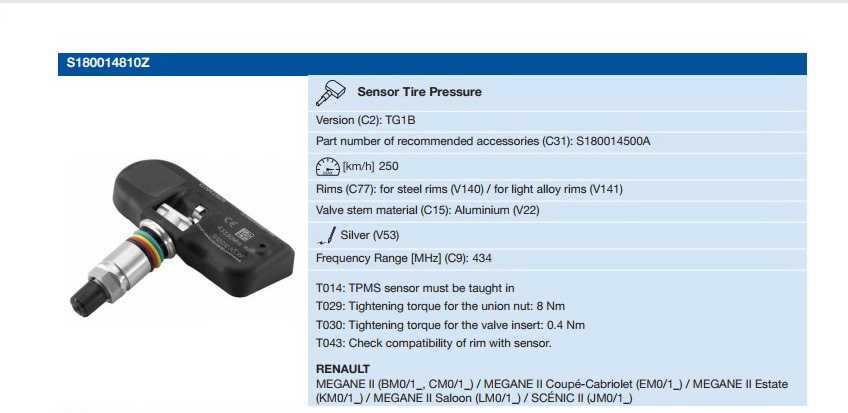
Note that a few PSI over your recommended tire pressure generally won't put you in the danger zone. After all, tire pressure fluctuates with the outside temperature. Your goal is to stay at your car manufacturer’s suggested cold tire pressure.
Alright, so what happens when you figure out you’ve overinflated your tires? Don't worry—fixing this air pressure problem is a breeze. To get the most accurate tire pressure reading and inflation, follow these steps when your tires are "cold," either in the morning or after the car has been sitting for a few hours. Topping off warm tires may result in over-inflation. Likewise, checking the inflation pressure when the tires are warm may incorrectly suggest the tires are already over-inflated.
 Use this, or a similar tool, to press down on the pin firmly. This will release air from the tire.
Use this, or a similar tool, to press down on the pin firmly. This will release air from the tire.Many vehicles have tire-pressure monitoring systems, which will alert you with a TPMS dashboard light when significant underinflation occurs. However, the dash icon only lights up when tire pressure drops 25% or more below the manufacturer's recommended level.
There are a few places you can find your recommended tire pressure:
The recommended tire pressure is the optimal pressure for tires on your specific vehicle. It's calculated by the manufacturer using the total weight and size of your vehicle, its towing and payload capacity, and recommended tire size. Sticking to this number can help you get the best performance from your tires and extend tire lifespan.
It's calculated by the manufacturer using the total weight and size of your vehicle, its towing and payload capacity, and recommended tire size. Sticking to this number can help you get the best performance from your tires and extend tire lifespan.
Don’t underestimate the importance of proper tire inflation. Keeping your tires at the manufacturer’s recommended tire pressure is key to keeping you safe on the road and getting your money’s worth out of your tires.
Remember, no job is too small for us! Visit your local Firestone Complete Auto Care for a free tire pressure check, we’ll help you inflate (or deflate!) your tires.
Japanese Used Cars TOP > BLOG > Car Maintenance > The Easy Way to Let Air Out of your Car Tires
by Carusedjp
Last Updated on 9月 23, 2022 by Carusedjp
Many car owners think that when they over inflate their tires, they can expect better fuel efficiency and more responsive handling. Even those who buy used trucks for sale that over inflating their tires would improve the condition of their vehicle. However, the truth is that over inflated tires can be dangerous.
Even those who buy used trucks for sale that over inflating their tires would improve the condition of their vehicle. However, the truth is that over inflated tires can be dangerous.
If you want the best fuel efficiency and handling possible for your vehicle, then it would be advisable to follow the manufacturer-recommended tire pressure level. Your manual will tell you what the optimum tire pressure for your car is. Keep in mind that these numbers were determined through a series of tests and studies for each car model, with consideration to the following factors:
Search Japanese Used Cars
When you exceed the manufacturer-recommended pressure levels, your tires will wear out sooner than expected. It is worth noting that tires tend to round out on the tread section when they are over inflated. Consequently, the center wears out at a faster rate than the outer edges.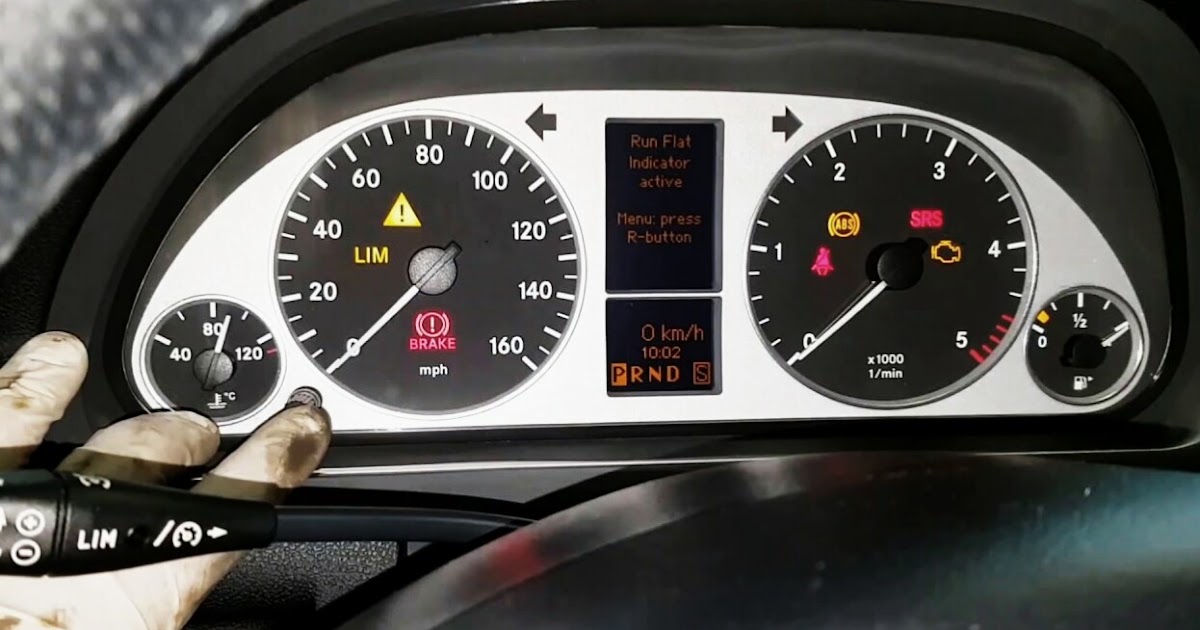 It is possible that your tires will only reach half their actual lifespan.
It is possible that your tires will only reach half their actual lifespan.
Aside from that, over inflating your tires can also cause traction loss. Even when you drive on regular roads and conditions, over inflated tires can cause your vehicle to lose traction. This would lead to accidents. This problem becomes especially evident during the winter season. Your rides can become harsher as well. When tires are over inflated, they tend to give a bumpier rider. Needless to say, you will feel every dip in the road.
It is recommended for every driver to own a digital tire gauge. This is one of the items you can keep in the glove compartment. You can also keep a notebook where you can write down the tire pressure and the fuel economy. Here are the steps in checking your tire pressure:

Find Used Trucks here!
As we’ve mentioned, you will find the manufacturer-recommended pressure level on the tire’s sidewall. Here’s how to let air out of over inflated tires:
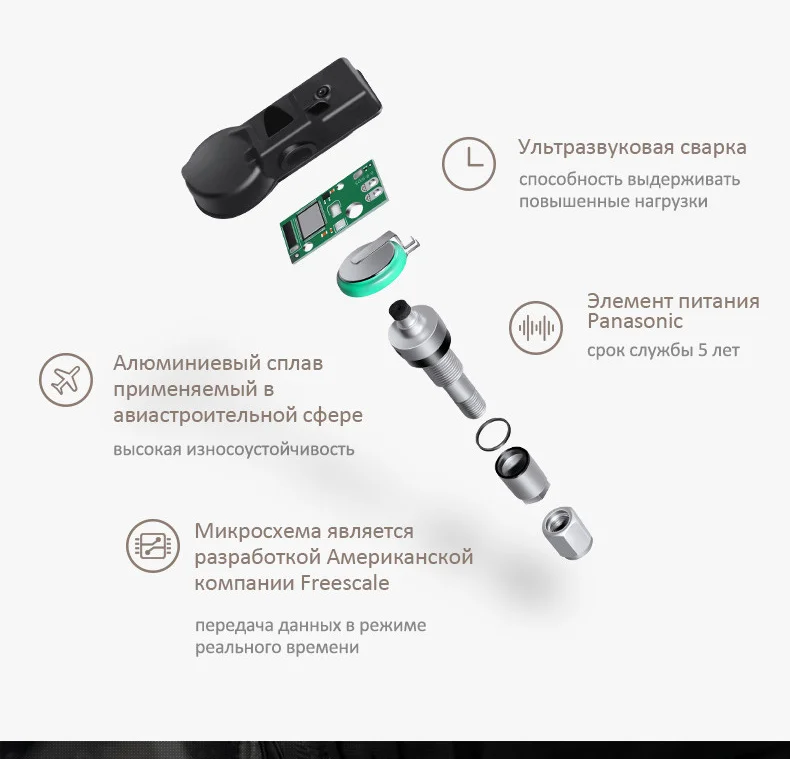 Make sure you attach the cap back to the valve stem.
Make sure you attach the cap back to the valve stem.How to Buy Japanese Car
Share this article:
Previous
Next
Save article:
The article says:
When the tires are optimally inflated, the low tire pressure indicator (TPMS) does not light up on the vehicle's dashboard.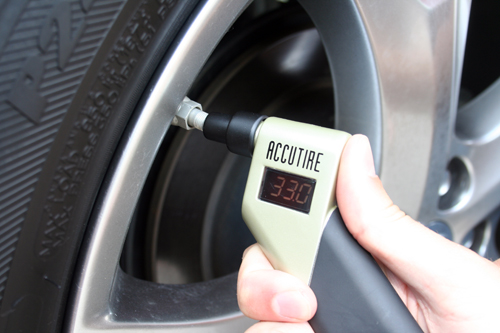 However, in some cases, it lights up even if the pressure is normal. This can't help but be annoying, especially when the tires are inflated normally. In our article today, we will figure out how to reset a tire pressure error.
However, in some cases, it lights up even if the pressure is normal. This can't help but be annoying, especially when the tires are inflated normally. In our article today, we will figure out how to reset a tire pressure error.
American and European scientists conducted a study, during which it was found that most drivers do not check whether the wheels are properly inflated before getting behind the wheel of a car. Only 40% of car owners perform such a check - and even then only once every 12 months. This is the reason for a large number of accidents.
The TPMS (Tyre pressure monitoring system) system is designed to monitor tire pressure, as well as warn of a malfunction. If the tires are under-inflated or over-inflated, an error will be displayed on the remote control or an audible signal will appear.
What is dangerous too high or, conversely, low pressure? The risk of an accident increases, the car begins to consume more fuel, in addition, the rubber wears out faster.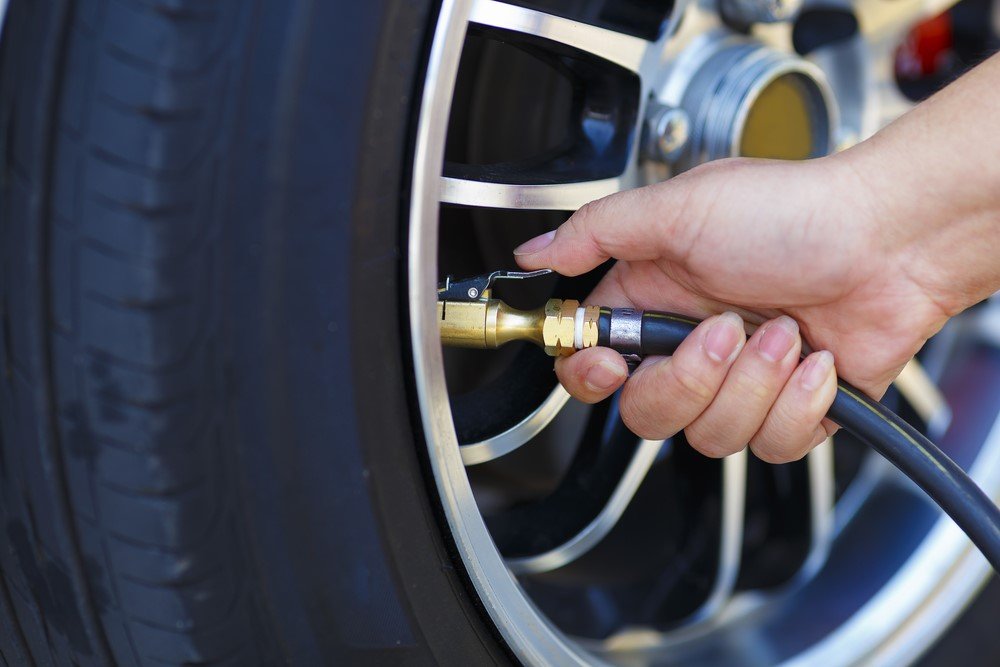
Photo: Shutterstock
The above devices operate on the same principle. Let's figure out how information about what tire pressure gets to the control panel.
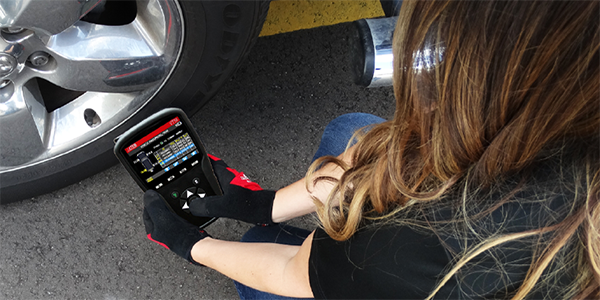 2 bar.
2 bar. Consider how pressure is calculated by measuring instruments. Typically, the sensor performs a comparison of the angular rotation of the wheel. Knowing the value of this parameter, you can calculate the distance that the wheel will travel in one rotation.
Obviously, if the tires are under-inflated or over-inflated, then the outer diameter of the wheel will be different. Visually, a person cannot determine this change. But the sensor notices even such changes. The system fixes non-compliance with the required parameters.
The sensor will still respond, despite the fact that the wheel circumference has changed quite a bit. In this situation, it is necessary to find out what mechanical reason led to this. Only in this way can you eliminate the misinterpretation of the signals transmitted by the system. This can happen because:

Also, the TPMS system gives an error when you install new wheels or rearrange them.
When, after these steps, a tire pressure error appeared, indicating unbalance, you should reset the settings, and then set the basic parameters. In this case, the control signal may remain even if the basic settings have been selected.
Why such problems may occur:
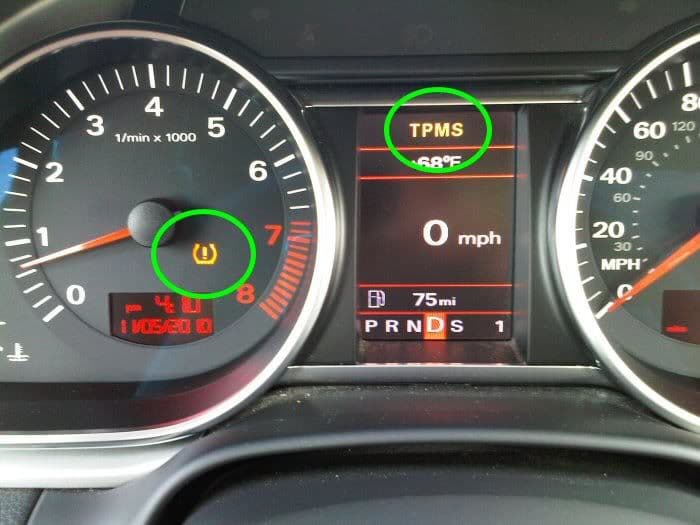
See also
Velcro or spikes: which rubber is better for the Russian winter?
Read more
How to reset tire pressure error? To begin with, imagine that the TPMS system is working properly and the blinking light indicates a problem with the undercarriage of the machine. The first thing you should do is slowly release the gas. You can not brake sharply, turn the steering wheel. After the car has stopped, inspect the tires to make sure the rubber is not punctured or broken. Then you can check if the tire pressure is normal.
Then you can check if the tire pressure is normal.
Pay attention! The TPMS will not always show a tire pressure error. For example, if the tires are slowly deflating, the system will not inform you about the problem. In the same way, she will not notice the error if the tire pressure starts to drop rapidly. This usually happens when a tire ruptures. This feature of the TPMS system is explained by the specifics of identifying and counting nonconformities.
However, in some cases, it happens that the TPMS system indicator is on, but the tires are in perfect condition. How to reset tire pressure error? We understand.
The complex TPMS system in some cases starts to work incorrectly. Usually, car owners observe the following picture: a tire pressure error is displayed on the display (the tire is underinflated), but in reality everything is fine with the wheel. You have to reset the tire pressure error._0.jpg) Otherwise, the TPMS system starts to work incorrectly.
Otherwise, the TPMS system starts to work incorrectly.
Photo: Shutterstock
You also have to reset the tire pressure error when there is radio interference from high voltage power lines. Or when sources of radio signals are located in the immediate vicinity. But as soon as you move away from them, the pressure error disappears and the system begins to function properly.
The reason for the malfunction may lie in the sensor, which is "failed". This damage cannot be easily repaired. How to reset a tire pressure error if the sensor flashes, while you hear a beep, lose your vigilance and find it difficult to drive a car? There are 4 ways to fix this problem.
To reset the error, pick up a speed of 80 km / h and continue driving for another 15 kilometers.
This method is the easiest to implement. If your car has this feature, then turn on the cruise control so that the speed does not change. Depending on the model of your car, you will be able to reset the tire pressure error at a speed that exceeds the specified one.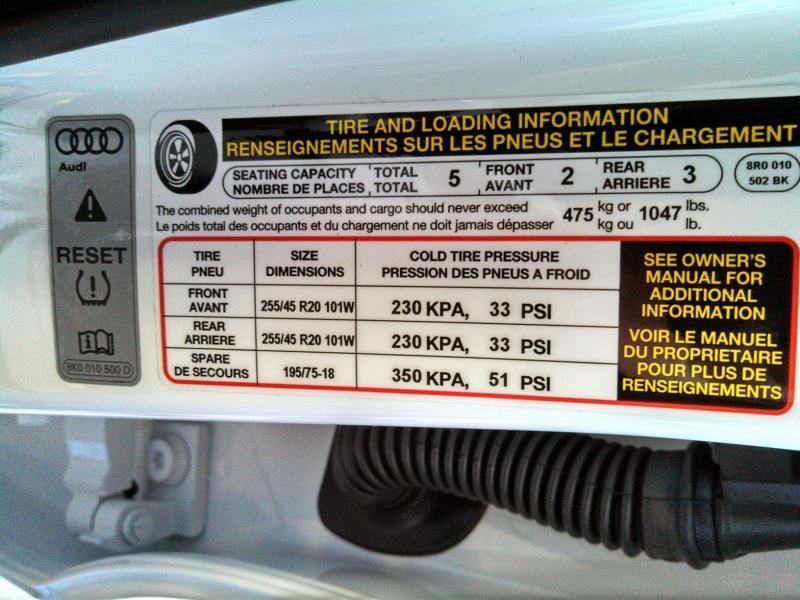 After you cover a distance of 15-20 kilometers, maintaining the same speed of 80 km / h, make a stop. Turn off the motor. When you start it again, the tire pressure error will disappear.
After you cover a distance of 15-20 kilometers, maintaining the same speed of 80 km / h, make a stop. Turn off the motor. When you start it again, the tire pressure error will disappear.
Popular articles
How to choose a subwoofer for your car
19.12.2022
1626
From top to bottom, obliquely: how to degrease a car body before painting
12/15/2022
1583
Chic, shine, beauty: how to remove scratches on a car with your own hands
9.12.2022
1410
Without damage: how to reduce the fuel consumption of your car
11/29/2022
898
How much do they pay for advertising on a car
11/25/2022
4219
Press the tire pressure monitoring system (TPMS) reset button on your car and you will be able to reset the error.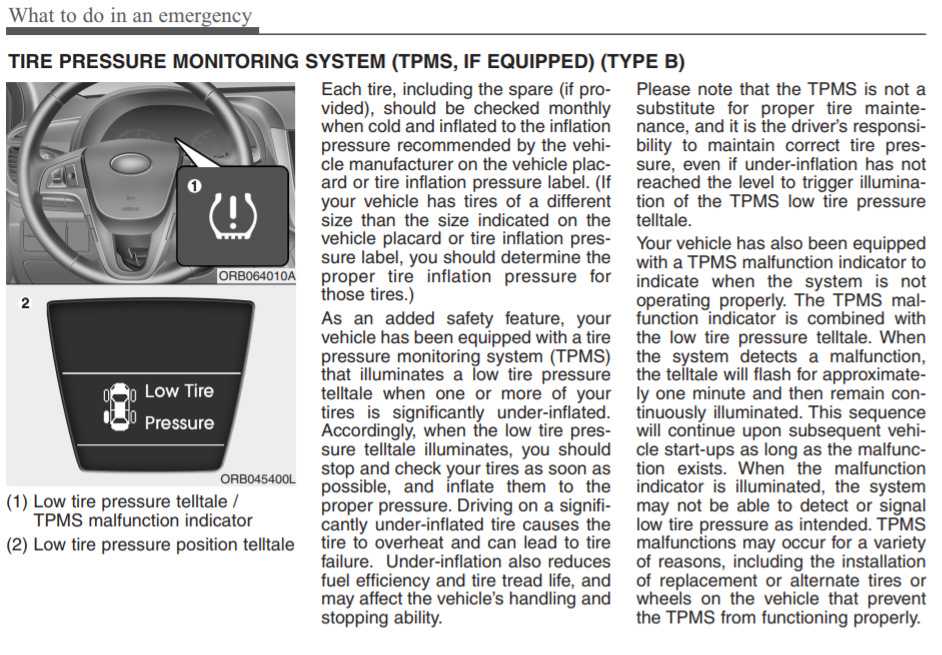
It does not matter what type of low pressure warning system is used. In any case, there will be a sensor on each wheel of your car. Sometimes it may be necessary to reboot the touch system of the car. Read the owner's manual for the vehicle. It contains information on how to reset a tire pressure error. Most often, the instructions indicate which button to press to reset.
The ignition key must be in the lock. No need to start the car, just turn it to the “on” (“ON”) position. Then press and hold the reset button, which may be under the steering wheel. We are waiting for the low pressure indicator to flash 3 times. After that, you can release the button. We start the car, it should work for 20 minutes. After this time, the computer will calibrate the sensors on the wheels. Now you can turn off the car.
Read also
""
Read more
Lower and then re-inflate the wheels.
Failed to reset tire pressure error using the previous method? Then we inflate all tires to 0.2 bar, this is the pressure that should be according to the recommendations of car manufacturers. Did the error go away? Then we lower the pressure in the tires completely.
Now we pump up the wheels again. The pressure in them should be the same as indicated on the driver's door pillar or in the car's operating instructions. When there are sensors on the wheels, you need to remember about the spare tire. Now you need to drive about 3-5 kilometers, adhering to a speed of 25 km per hour. So you can reset the tire pressure error.
Remove the battery terminals and then connect it to reset the error.
Each car has a computer that receives data from all kinds of vehicle sensors, including TPMS system sensors. However, any electronics can fail. To reset the error, you will have to reboot the system, for which you need to turn off the power.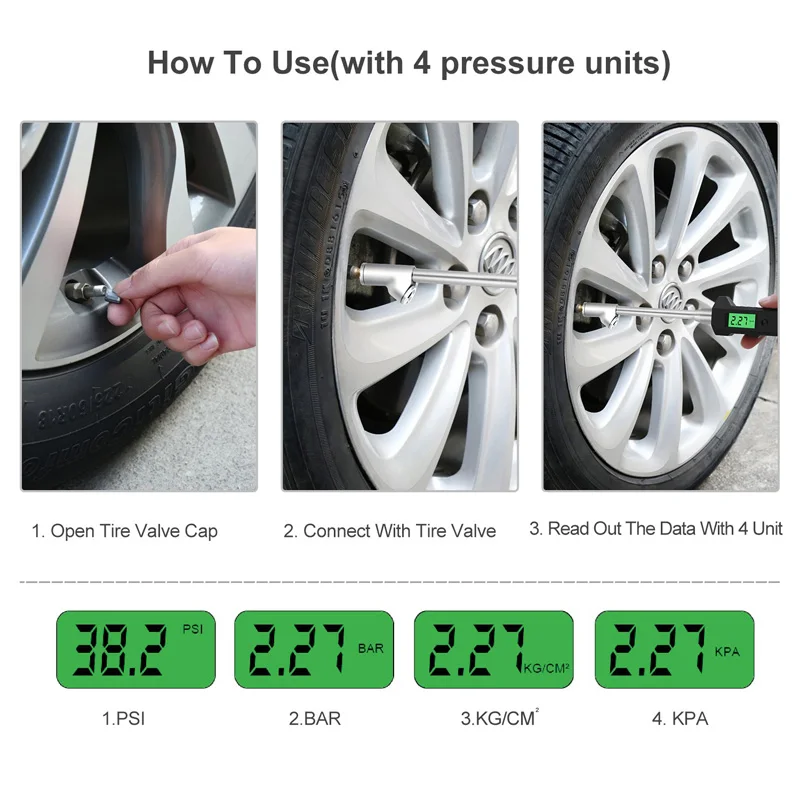
Photo: Shutterstock
To do this, open the hood. The battery is located under the hood. Disconnect the negative terminal from it. To perform this operation, use a wrench. Then sit in the driver's seat, turn the key to the "ON" position, but do not start the car. Now you need to press the signal for 3 seconds. This will use up the energy that remains in the electrical system of the machine. Then reconnect the battery. This way you can reset the error.
Sensors keep track of tire pressure. However, you need to be sure that they function properly. Of course, you do not need to constantly walk around with a special measuring device and find out the status of the sensors. It just needs to be calibrated from time to time.
It is performed quite simply. The most important thing to remember is that, depending on the make and model of your car, for each wheel there are pressure parameters strictly defined by the manufacturer for winter and summer.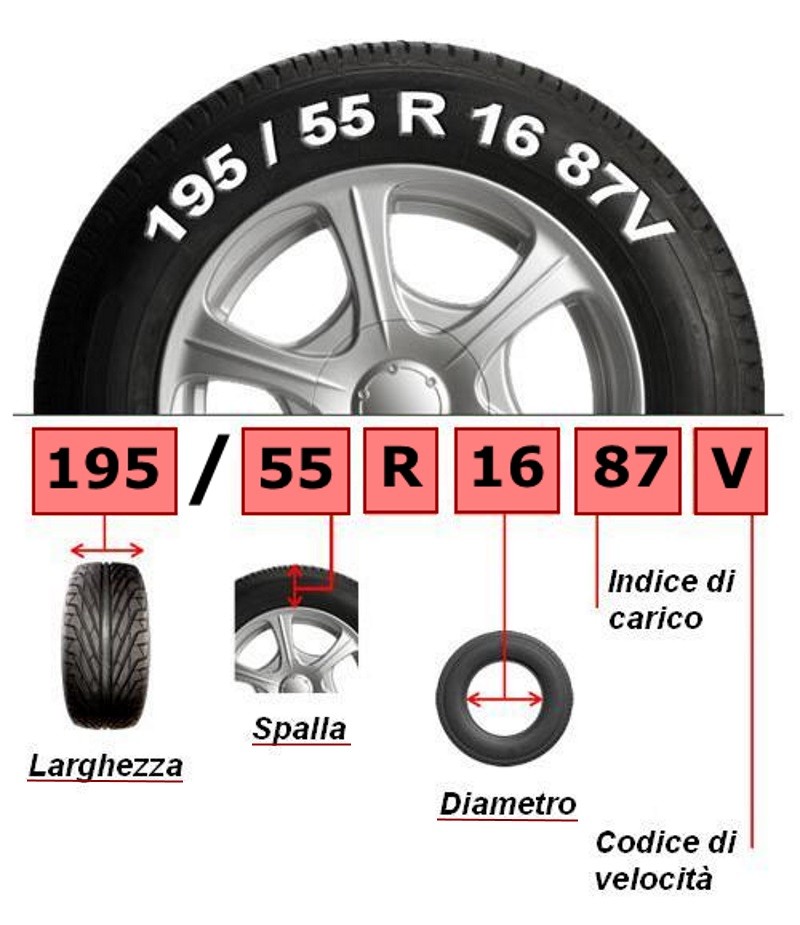 These values should be given to the sensors. How the installation and configuration will be performed depends on the controller used.
These values should be given to the sensors. How the installation and configuration will be performed depends on the controller used.
 Experts do not recommend using the internal controller yourself. However, additional settings are not required if the data is read using the screen that is directly on the control system.
Experts do not recommend using the internal controller yourself. However, additional settings are not required if the data is read using the screen that is directly on the control system. For current promotions on the Halva card, which will help you profitably purchase household appliances, you can follow here.
To prevent a tire pressure error from appearing, it is important to calibrate (adjust the TPMS system) every time a change is made. For example, when you installed a new set of wheels, repaired tires, did balancing, and the like. Using TPMS controllers is quite simple. The main thing is to read the instructions for use of the device. And make sure that the tire pressure is the one recommended by the car manufacturer.
See also
"What tires can be put on rims 14, 15 and 16: professional advice"
Read more
Every car owner gets annoyed if the tire pressure error icon lights up on the dashboard. This indicator informs you that something is wrong with the wheels. However, even if the tire pressure is optimal, the tire pressure error must be reset.
This indicator informs you that something is wrong with the wheels. However, even if the tire pressure is optimal, the tire pressure error must be reset.
The fact is that if the TPMS system icon constantly signals insufficient pressure, the driver will not be able to know when the rubber will actually begin to deflate. Driving becomes dangerous for both you and other road users. It is necessary to find out the cause of the malfunction as soon as possible and reset the tire pressure error. This is the only way to operate the vehicle safely.
TPMS or Tire Pressure Monitoring System is a set of equipment commonly found in modern cars. Its main job is to alert you if there are problems with tire pressure. For example, one tire has lost pressure - in this case it is not safe to drive, but the system will inform you about this, and you can inflate the wheel to avoid steering problems.
But sometimes the system does not work correctly.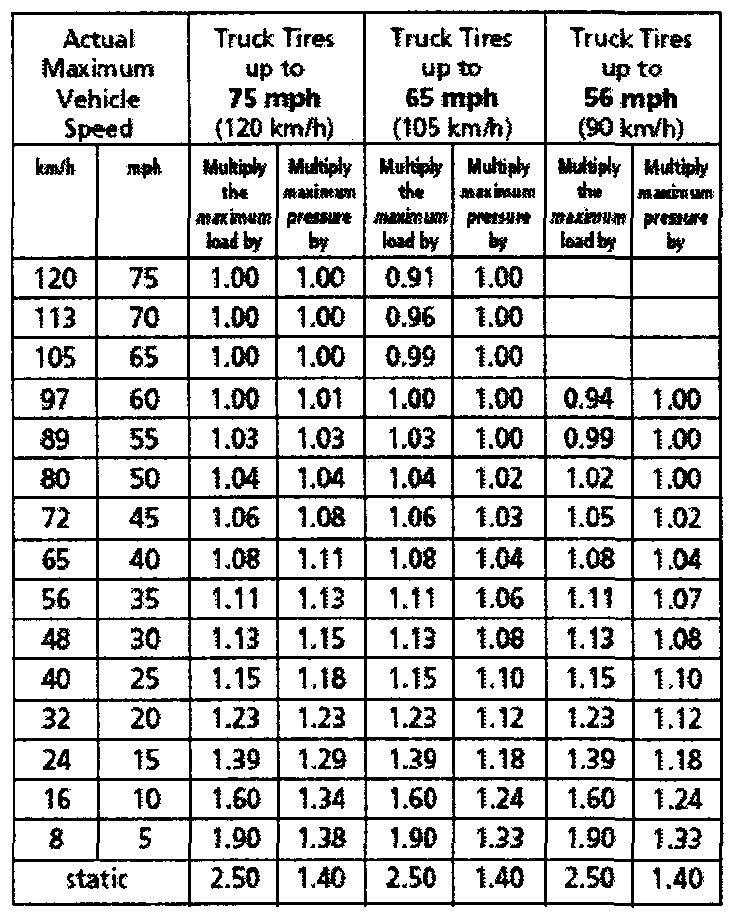 Some sensors may fail or the system needs to be rebooted. In this case, you may see a blinking or simply lit tire pressure error indicator on the dashboard. Resetting the pressure monitoring system will help you solve the problem if the sensor is working.
Some sensors may fail or the system needs to be rebooted. In this case, you may see a blinking or simply lit tire pressure error indicator on the dashboard. Resetting the pressure monitoring system will help you solve the problem if the sensor is working.
Please note that different vehicles may have different TPMS reset methods, so you may need to try several of them before you know the most effective one.
Initially, you will just need to hold the tire pressure sensor reset button for a few seconds until the pressure indicator flashes three times and then turns off. But sometimes it doesn't help much. So we found other ways to calm down the pressure control system.
First, locate the TPMS reset button, which is usually located somewhere under the steering wheel. Start the car, press and hold the button for 3 seconds. Then drive at a speed of 80 km/h for approximately 10 minutes. Of course, you will need to find a suitable track for this. Steady driving is an important part of resetting tire pressure sensors this way. Of course, before this operation, you will need to inflate the tires to the required pressure.
Steady driving is an important part of resetting tire pressure sensors this way. Of course, before this operation, you will need to inflate the tires to the required pressure.
In some vehicles, you will need to drive on any road and at any speed for 20 minutes after resetting the sensors, as long as you do not turn off the engine.
So, start the car, press the reset button and hold it for three seconds. Do not turn off the engine until 20 minutes have passed. You can drive or just let the engine idle for 20 minutes. This method of resetting pressure sensors should work for most vehicles. Again, inflate the tires to the correct pressure before resetting the system.
If the simple methods don't work with your machine, try another method. Start the engine so that the tire pressure monitoring system can register the changes. Then inflate the tire 0.2 bar above the recommended level. After a minute, completely deflate the tire. Wait one more minute to reset the sensors. Then inflate the tire to the optimum pressure level and let the engine run for another minute. The indicator should stop flashing.
Wait one more minute to reset the sensors. Then inflate the tire to the optimum pressure level and let the engine run for another minute. The indicator should stop flashing.
The idea is to reset the entire engine electronics system by cutting off the power supply from the battery. First, make sure all tires are at the correct pressure. After that, turn off the engine, open the hood and disconnect both terminals from the battery. Wait 10-15 minutes. Reconnect the battery and turn on the ignition to check if the indicator lamp goes out.
If the above methods do not work with your vehicle, there is another option. Find a manual for your car or open a forum thread that talks about resetting tire pressure sensors in your car. Look for the combination of steps the manufacturer recommends to reset the TPMS system. Sometimes the combination can be quite strange and even complex.
If all methods fail and the error light continues to flash, the problem may be with the sensors. It is the blinking signal of the tire pressure lamp that often indicates a sensor malfunction. If there is a problem with tire pressure, usually the light will just come on and not blink.
It is the blinking signal of the tire pressure lamp that often indicates a sensor malfunction. If there is a problem with tire pressure, usually the light will just come on and not blink.
So if the light is flashing, one of the sensors may be faulty. Replacing the element is not so easy because it is under the tire. The tire must be removed from the rim to replace the sensor.
After replacement, you will still need to reset the pressure control system for the new sensor to work. Otherwise, the indicator will flash or light up.
Where is the reset button for the tire pressure sensors?
The button is often located directly below the steering wheel. But there may be different options. If you don't find the TPMS reset button there, look around the steering wheel - it should be somewhere in this area.
Difficult to say for all vehicles, but for most vehicles, the travel time before the tire pressure monitoring system resets should be at least 10-15 minutes. If you turn off the engine earlier than 10 minutes after pressing the reset button, the TPMS will still send some error signals the next time the engine is started.
If you turn off the engine earlier than 10 minutes after pressing the reset button, the TPMS will still send some error signals the next time the engine is started.
Drivers occasionally upgrade tires and wheels to larger ones and want their stock pressure control modules to work properly. The problem is that larger or flat-ride tires will have a different optimum pressure level, so the original gauges will always show an error on your dashboard.
One way to solve the problem is to buy other sensors adjusted to the correct tire pressure. Another way is to reset the control system in your car at the service station. Just check which option will be cheaper for you.
It's hard to say why manufacturers haven't added an option to automatically reset tire pressure sensors in cars. In most post-2015 vehicles, the TPMS is autonomous enough that it won't bother you much with reset requests.